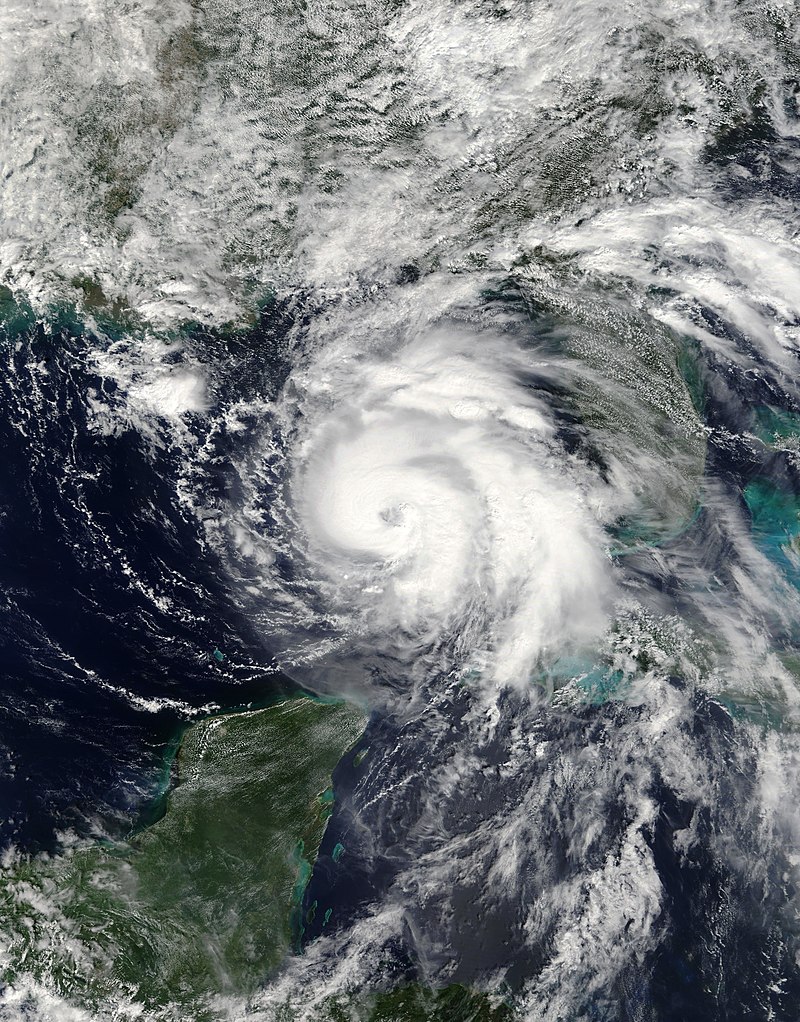Global catastrophe risk modeller RMS has said that, due to the unusual speed with which Hurricane Michael has developed, the potential impacts are likely to be severe yet “almost the opposite of what we saw in Florence.”

Hurricane Michael on October 9, 2018. Source: NASA
RMS noted that Michael, which is due to make landfall in Florida today, only achieved tropical storm status on Sunday, October 7 and has already strengthened to a Category 4 storm with maximum sustained winds of 140mph and higher gusts.
Michael has rapidly intensified with wind speeds jumping from 35mph to 75pmh within a single day and is expected to continue to strengthen further as wind shear diminishes and due to the above-average sea surface temperatures in the Gulf of Mexico.
The speed of the storm mitigates the possibility of high rainfalls totals that would be caused by a slow-moving storm, RMS noted, with maximum rainfall predictions only reaching around 10 inches for the Florida panhandle and southern Georgia.
RMS does not therefore expect flood to be a large loss driver with Michael, which contrasts significantly with the severe inland flooding caused by Hurricane Florence, which dumped upwards of 20 to 30 inches of rain in some areas as it stalled over the Carolinas last month.
Michael’s speed also means that it is forecast to maintain some intensity as it moves farther inland, retaining at least tropical storm strength as it crosses Georgia and the Carolinas, meaning its overall wind swath could be broad.
By contrast, Florence weakened quickly at landfall and its slow forward motion restricted its most damaging winds closer to the landfall point.
Michael is currently forecast to bring up to four to six inches of rain to the Carolinas and is due to enter the Atlantic near Norfolk, Virginia over on Thursday 11 at tropical storm strength, RMS said.
RMS added that storm surge will also be a major loss driver from Michael, with the Big Bend region of Florida likely to be most at risk due to its shallowly sloped coastline, which allows for water to build up as the storm surge moves ashore.
“Severe storm surge is a possibility over a large portion of the Florida panhandle,” RMS stated, “with the highest surge expected to the right of the storm’s track. Current projections forecast large swaths of coastline exposed to storm surges reaching more than nine feet above sea level.”
From a modelling perspective, RMS said that Hurricane Michael is most closely comparable to Eloise in 1975 (US $3.6 billion), Opal in 1995 ($4.1 billion), and Dennis in 2005 ($1.2 billion), although it specified that these benchmarks are not loss estimates.


